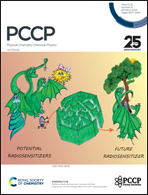Decoding selectivity: computational insights into AKR1B1 and AKR1B10 inhibition
Abstract
Understanding selectivity mechanisms of inhibitors towards highly homologous proteins is of paramount importance in the design of selective candidates. Human aldo-keto reductases (AKRs) pertain to a superfamily of monomeric oxidoreductases, which serve as NADPH-dependent cytosolic enzymes to catalyze the reduction of carbonyl groups to primary and secondary alcohols using electrons from NADPH. Among AKRs, AKR1B1 is emerging as a promising target for cancer treatment and diabetes, despite its high structural similarity with AKR1B10, which leads to severe adverse events. Therefore, it is crucial to understand the selectivity mechanisms of AKR1B1 and AKR1B10 to discover safe anticancer candidates with optimal therapeutic efficacy. In this study, multiple computational strategies, including sequence alignment, structural comparison, Protein Contacts Atlas analysis, molecular docking, molecular dynamics simulation, MM-GBSA calculation, alanine scanning mutagenesis and pharmacophore modeling analysis were employed to comprehensively understand the selectivity mechanisms of AKR1B1/10 inhibition based on selective inhibitor lidorestat and HAHE. This study would provide substantial evidence in the design of potent and highly selective AKR1B1/10 inhibitors in future.

- This article is part of the themed collection: 2024 PCCP HOT Articles


 Please wait while we load your content...
Please wait while we load your content...